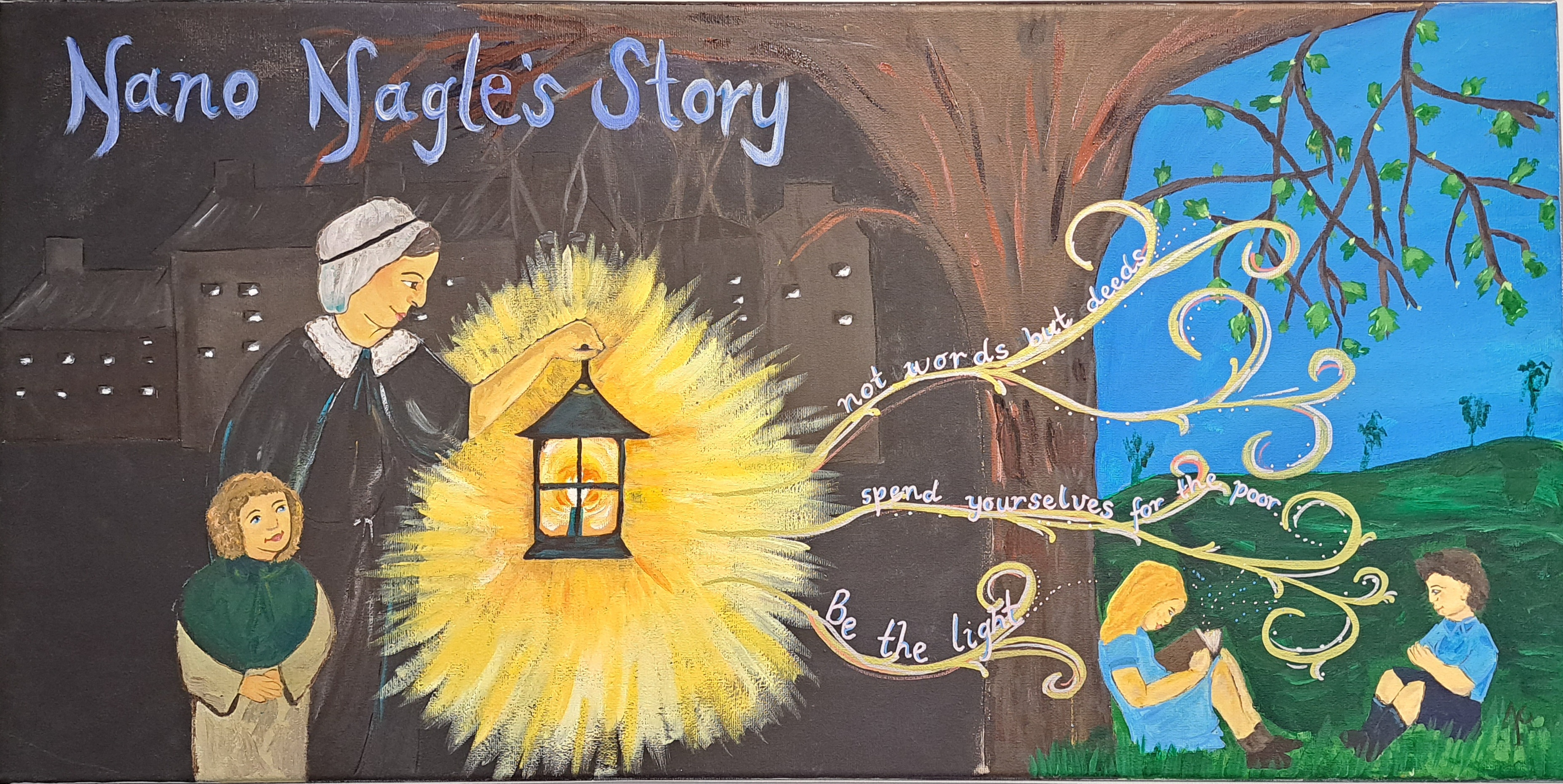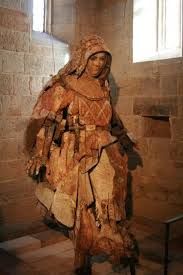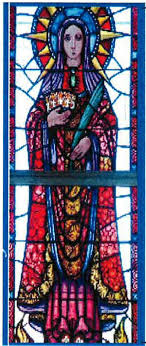Situated on the land of the Turrbal people, the traditional Owners and Custodians, St Agatha's at Clayfield is a school steeped in a rich history.
St Agatha's school motto “Growth, Friendship and Faith" is modelled on the three pillars of our school community. Mary MacKillop for her commitment to growth, Nano Nagle for commitment to friendship and St Agatha for her commitment to faith.



At St Agatha's we are led by the Presentation Charism of Nano Nagle as we seek to promote a community that is grounded in the rich faith traditions of the Catholic Church. Like venerable Nano Nagle we listen to the call of God to bring about God's plans for our sacred world. Modelled on the example of Christ we seek to empower through education, challenge injustice and work for peace. At St Agatha's we inspire all stakeholders to establish and maintain strong connections with Christ, Charism and Community.
Presentation Charism: Nano Nagle
Nano Nagle (1718-1784) was born in Ballygriffin, Ireland, during a time of persecution of Irish Catholics under English penal laws. Nano completed her education in Paris, before returning to Cork, Ireland. When she arrived in Cork, she was confronted by the many social injustices apparent at the time. Nano Nagle's life of prayer, her concern for her people, her courage and perseverance inspired and enabled her to establish schools to educate the poor and disadvantaged and provide other works of charity for those who were poor and oppressed by unjust social structures. Nano educated people in 'hedge schools' by day and walked the alleyways of Cork at night as she brought comfort and support to the poor and vulnerable, using her lantern to light the path.
In 1775 at the age of 57, Nano began a religious community called the Sisters of Charitable Instruction of the Sacred Heart of Jesus. This community later became known as the Sisters of the Presentation of the Blessed Virgin Mary (PBVM). After Nano's death growth of the congregation was steady, with Sisters moving to Newfoundland, England, India, America, Australia and New Zealand.
By the 1860's Catholic schools had become a concern of the Church, especially in countries of multi faith traditions such as Australia. At this time education was recognised as a means of social reform which sought to inform the moral and social concerns of the people by developing religious culture and community. The Presentation Sisters continued to answer the call of the needy, and this sometimes involved making long, hazardous journeys to scattered outpost settlements. These long distances and extreme weather conditions did not weaken these women of faith, as the Sisters remained committed to the relief of suffering and injustice within an educational context.
The Second Vatican Council (1962-1965) challenged the Presentation communities as they realised that like Nano they were impelled to act in response to the plight of the poor and powerless. Many Sisters moved from school-based ministry, placing increased emphasis on providing services that seek to challenge social conditions that lead to impoverishment.

A constant focus throughout history, from Presentation Sisters and Presentation People, has been the recognition of the human dignity of each person and a clear determination to address social injustice, oppression and any acts which deny the flourishing of the human spirit.
In the early 1900s Archbishop Duhig of Brisbane invited the Presentation Sisters to Brisbane after their great work in Rockhampton. In 1925 the Presentation Sisters began their work in Clayfield and gladly accepted the Archbishop's invitation to staff St Agatha's school at Clayfield. The first sisters resided temporarily in the presbytery as no provision had been made for a convent. The sisters appointed to Clayfield were Mother Superior Patrick Madden, Sister Ignatius Kelly and Sister Bernadette Haymen and quickly established enrolments of 140 students. In late 1926 St Rita's college opened with 15 high school students and later took primary school students. This caused a loss of identity for St Agatha's school as it lost many enrolments to as low as only 40 students and so in 1950 St Agatha's affirmed itself as a primary school as year 7 and 8 students moved to St Rita's College permanently.
Josephite Charism: St Mary of the Cross MacKillop
As the patron saint of the Archdiocese of Brisbane and the first Australian to be canonised as a Saint, St Mary of the Cross MacKillop's story is infused into the life of St Agatha's school.
Mary MacKillop was an Australian nun who has been declared a saint as St Mary of the Cross. Of Scottish descent, she was born in Melbourne but is best known for her activities in SA. Together with the Reverend Julian Tenison Woods, she founded the Sisters of St Joseph of the Sacred Heart, that established schools and welfare institutions throughout Australia and New Zealand, with an emphasis on education for the rural poor.
Early Life and Ministry
Mary started work at the age of 14 and 1860 she took a job as governess] at the estate of her aunt and uncle, to provide for her needy family. Through this work she was to look after their children and teach them. Already set on helping the poor, she included the other farm children on the estate as well. This brought her into contact with Fr Woods.
Founding of school and religious congregation
Fr Woods had been very concerned about the lack of education and particularly Catholic education in South Australia. In 1866, he invited MacKillop and her sisters to come to Penola and to open a Catholic school. Woods was appointed director of education and became the founder, along with MacKillop, of a school they opened there. After renovations by their brother, the MacKillops started teaching more than 50 children. At this time MacKillop made a declaration of her dedication to God and began wearing black.
The "Rule of Life" developed by Woods and MacKillop for the community emphasised poverty, a dependence on divine providence, no ownership of personal belongings, faith that God would provide and willingness to go where needed. Due to the colour of their attire the Josephite sisters became colloquially known as the "Brown Joeys".
Expansion of the Sisters of St Joseph
By the end of 1869, more than 70 members of the Sisters of St Joseph were educating children at 21 schools in Adelaide and the country. MacKillop and her Josephites were also involved with an orphanage; neglected children; girls in danger; the aged poor; and a home for the aged and incurably ill. In December 1869, MacKillop and several other sisters travelled to Brisbane to establish the order in Queensland. They were based at Kangaroo Point and took the ferry or rowed across the Brisbane River to attend Mass at St Stephen's Cathedral. By 1871, 130 sisters were working in more than 40 schools and charitable institutions across SA and QLD.
Excommunication
After the founding of the Josephites, Bishop Sheil appointed Woods as director general of Catholic education. Woods came into conflict with some of the clergy over educational matters and local clergy began a campaign to discredit the Josephites. Fr Charles Horan met with Sheil in 1871 and convinced him that the Josephites' constitution should be changed in a way that could have left the Josephite nuns homeless; the following day, when MacKillop apparently did not accede to the request, Sheil excommunicated her, citing insubordination as the reason. Though the Josephites were not disbanded, most of their schools were closed in the wake of this action. Forbidden to have contact with anyone in the church, MacKillop lived with a Jewish family and was also sheltered by Jesuit priests. On his deathbed, Sheil instructed Horan to lift the excommunication on MacKillop. An episcopal commission later completely exonerated her.
Rome
MacKillop made preparations to leave for Rome to have the "Rule of Life" of the Sisters of St Joseph officially approved. MacKillop travelled to Rome in 1873 to seek papal approval for the religious congregation and was encouraged in her work by Pope Pius IX. While in Europe, MacKillop travelled widely to observe educational methods. During this period, the Josephites expanded their operations into NSW and New Zealand.

Return from Rome
When MacKillop returned to Australia in January 1875, after an absence of nearly two years, she brought approval from Rome for her sisters and the work they did, materials for her school, books for the convent library, several priests and most of all, 15 new Josephites from Ireland. Regardless of her success, she still had to contend with the opposition of priests and several bishops.
By 1877, it operated more than 40 schools in SA, with many others in QLD and NSW. In 1883 Patrick Francis Moran became archbishop and although he had a positive outlook toward the Josephites, he removed MacKillop as superior general and replaced her with Sister Bernard Walsh.
Death
MacKillop died on 8 August 1909 at the Josephite convent in North Sydney. After MacKillop's burial, people continually took earth from around her grave. As a result, her remains were exhumed and transferred in January 1914 to a vault before the altar of the Virgin Mary in the newly built memorial chapel in Mount Street, North Sydney.
Canonisation and Commemoration
In 1925, the Sisters of St Joseph, began the process to have MacKillop declared a saint. The process for MacKillop's beatification began in 1926. After several years of hearings, close examination of MacKillop's writings and a 23-year delay, the initial phase of investigations was completed in 1973. In 1992 the church endorsed the belief that Veronica Hopson, apparently dying of leukaemia in 1961, was cured by praying for MacKillop's intercession; MacKillop was beatified on 19 January 1995 by Pope John Paul II.
In 2009, the Congregation for the Causes of Saints issued a papal decree formally recognising a second miracle, the complete and permanent cure of Kathleen Evans of inoperable lung and secondary brain cancer in the 1990s. Her canonisation subsequently took place on 17 October 2010. This made her the first Australian to be recognised as a saint by the Catholic Church. An estimated 8,000 Australians were present in Vatican City to witness the ceremony.
Patron Saint: St Agatha
As the patron saint of our school St Agatha's life story models a strong commitment to faith and reminds all in our community of our strong Catholic identity.

Agatha was born in Italy, however; it isn't known exactly if she was born in Catania or Palermo, Sicily. She was born in the third century, in a time where Christianity wasn't legal. As a young lady Agatha decided to dedicate herself to God. She considered herself to be a bride of Christ and reserved herself totally to him as a virgin. Previously St. Paul had written, “An unmarried woman is anxious about the things of the Lord, so that she may be holy in both body and spirit" (1 Cor 7:34a).
The Assault on Her Virtue. A young, influential, Roman consul named Quintian met Agatha, he liked her immensely, and insisted that she marry him. He threatened her with torture if she refused him. Agatha was faithful to her promise to God and flatly rebuffed his advances and proposal. “My Lord Jesus Christ," she prayed, "you see my heart and because I am all yours. Save me from this evil man. Make me worthy of winning out over this evil."
Persecution and Torture. Outraged, Quintian sent Agatha to a house for the outcast as a way of ridiculing her. Committed in integrity, Agatha was treated horribly. According to tradition, St. Peter appeared to Agatha in a vision and she was miraculously healed.
Patronage. Agatha is the patron saint of women with breast cancer. Because she was
healed, she is the patron saint of nurses. Because she lived a chaste youth, she is the patron saint of young people who wish to adhere to high moral standards. Because she was faithful to her promise to be a bride of Christ, she is the patron saint of married couples who wish to be faithful to their marriage vows. Because she lived in Sicily Italy, she is the patron saint of Palermo and Catania. There was an eruption of the volcano on Mount Etna, and it is believed that through her intercession the volcano subsided, so she is the patron saint of those who want protection from volcanoes and fires, as well as the patron saint of firefighters. She is the patron saint of bell makers and bell ringers for a variety of reasons: possibly because bells were rung when the volcano erupted, or some lava solidified in the shape of a bell. 
Meaning of the name 'Agatha
The name Agatha originates from the Greek word Agathos which translates as 'good'. Agatha was a person of good deeds and actions who committed herself to God. She was truly good, for she lived a child of God.
"Saint Mary MacKillop of the Cross-1=" by Sheba Also 18 Million Views is licensed under CC BY-SA 2.0.
© Brisbane Catholic Education, St Agatha's Primary School (2023)